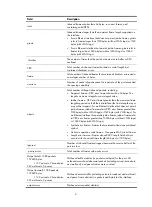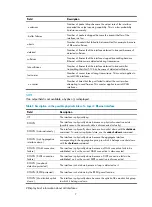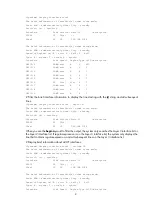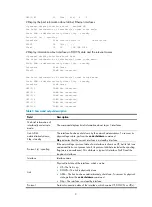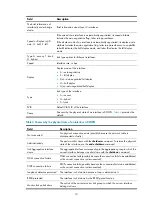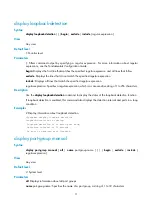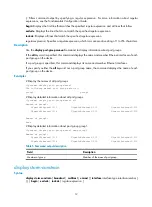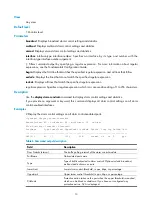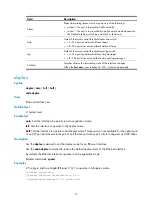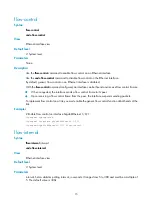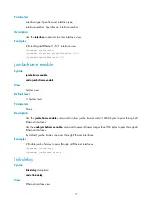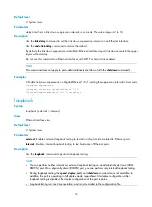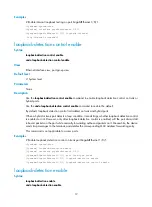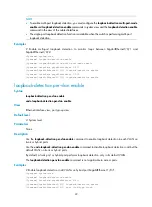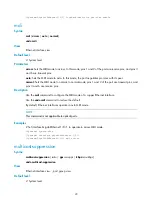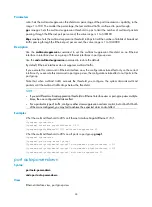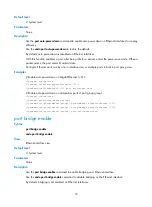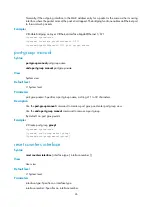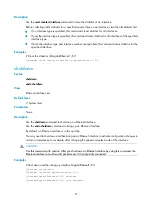
12
|
: Filters command output by specifying a regular expression. For more information about regular
expressions, see the
Fundamentals Configuration Guide
.
begin
: Displays the first line that matches the specified regular expression and all lines that follow.
exclude
: Displays the lines that do not match the specified regular expression.
include
: Displays all lines that match the specified regular expression.
regular-expression
: Specifies a regular expression, which is a case sensitive string of 1 to 256 characters.
Description
Use the
display port-group manual
command to display information about port groups.
If the
all
keyword is specified, this command displays the name and member Ethernet interfaces of each
port group on the device.
If a port group is specified, this command displays its name and member Ethernet interfaces.
If you specify neither the
all
keyword nor a port group name, the command displays the name of each
port group on the device.
Examples
# Display the names of all port groups.
<Sysname> display port-group manual
The following manual port group exist(s):
group1 group2
# Display detailed information about all port groups.
<Sysname> display port-group manual all
Member of group1:
GigabitEthernet1/0/1 GigabitEthernet1/0/2 GigabitEthernet1/0/3
GigabitEthernet1/0/4 GigabitEthernet1/0/5 GigabitEthernet1/0/6
Member of group2:
None
# Display detailed information about port group group1.
<Sysname> display port-group manual name group1
Member of group1:
GigabitEthernet1/0/1 GigabitEthernet1/0/2 GigabitEthernet1/0/3
GigabitEthernet1/0/4 GigabitEthernet1/0/5 GigabitEthernet1/0/6
Table 5
Command output description
Field Description
Member of group
Member of the manual port group
display storm-constrain
Syntax
display storm-constrain
[
broadcast
|
multicast
|
unicast
]
[
interface
interface-type
interface-number
]
[
|
{
begin
|
exclude
|
include
}
regular-expression
]









